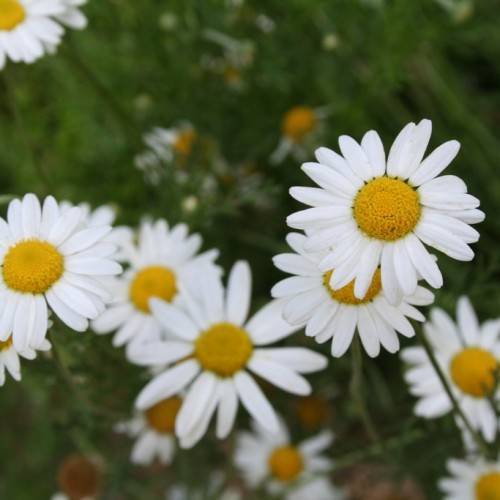
chamomile
Chamaemelum nobile
Cycle:
Herbaceous Perennial
Watering:
Average
Hardiness Zone:
4 - 9
Flowers:
Flowers
Sun:
Full sun,part shade
Soil:
Rocky , gravelly , dry, Well-drained
Fruits:
Fruits In Autumn Ready In Fall
Leaf:
Yes
Growth Rate:
High
Maintenance:
Low
Drought Tolerant:
Yes
Care Level:
Medium
watering
Chamomile (Chamaemelum nobile) requires about 1 inch of water per week. Water your Chamomile deeply, and then allow it to almost completely dry out before the next watering. Water plants in the morning or evening – avoid the midday heat. If the soil gets too dry, the plants can suffer from a lack of nutrients and look wilted or discolored. Avoid over-watering as waterlogged soils can lead to root-rot.
sunlight
Chamomile requires a full sun exposure of at least 6 to 8 hours of direct sunshine per day for optimal growth and flowering. Morning sun is ideal for this plant species since it is more intense and will help the blooms open in the daytime. Some shade is beneficial during mid-day when temperatures and UV rays are at their maximum. In areas with hot summers, planting less sun-tolerant varieties in shadier locations or providing afternoon shade from structures like walls or awnings helps increase chamomile’s longevity.
pruning
For Chamomile (Chamaemelum nobile), pruning is usually done at the end of winter when established plants are already well into their dormant period. Start by cutting off any dead or damaged branches close to the main stem. Then, lightly trim around the entire plant to remove foliage that has become too spindly or overgrown. This will help to promote better air flow and increased flowering. After pruning, approximately 1/3 of the plant should remain. Pruning should only be done when absolutely necessary as over-pruning can cause more harm than good. Regular maintenance is advised to ensure optimal health and flowering of the plant.
